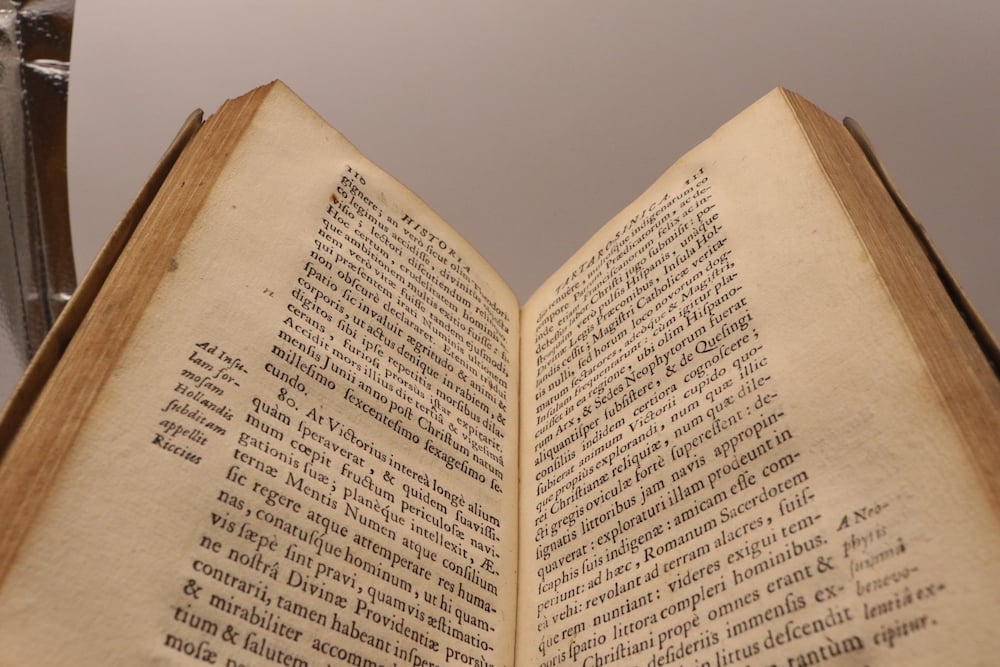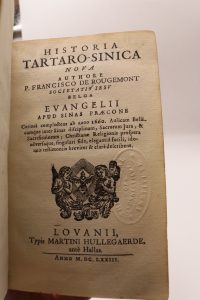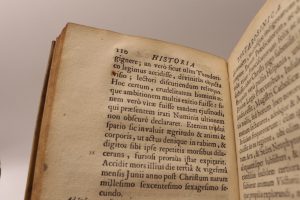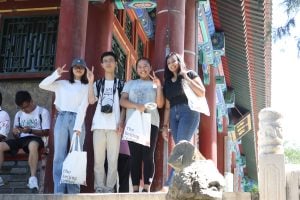
Library Tour – Eyewitness to the Fall of the Ming Dynasty, Part 2
One of the most interesting books TBC has in historical collection the original Latin edition of Historia Tartaro-Sinica nova, written by the Belgian Jesuit Francois de Rougemont, and is his eyewitness narrative of the Ming-Qing Transition. That includes the Manchu campaigns against Zheng Chenggong (Koxinga) and the foreign missionary activities in China in the mid-17th century.
We love sharing the treasures in our library. This post is part 2 of a glimpse into books we have that are perspectives from missionaries who were in China as the Ming became the Qing. Check out the other post, from Martino Martini SJ, by clicking here.
The first part of this work gives a detailed description of Manchu’s consolidation of power in the south of China, including the career of the Chinese pirate leader Zheng Zhilong who achieved great power in the transitional period between the Ming and Qing dynasties, and also the career life of his son Zheng Chenggong who had been campaigned against by Manchu forces.
The second part deals with the politics at court during the reign of the Shunzhi Emperor (1643-1661), the final campaign against the Ming pretenders, and the history of the Ao Bai (Oboi) Regency (1661-1669) that led to a series of trials and persecutions targeting the Jesuit mission in Beijing. Rougemont, preaching in Zhejiang and Jiangnan at that time, found himself caught in the whirlwind of the anti-Christianity movement. Dragged to Beijing with fellow missionaries, they faced trials. As revealed in Rougemont’s account, Ferdinand Verbiest (a Flemish Jesuit missionary) mandated the creation of this book. Given the inconvenience for Ferdinand Verbiest to document the movement in Beijing, he entrusted Rougemont with the task when Rougemont was exiled to Guangzhou. Published in Lisbon in 1672, this first Latin edition was published one year later. It is a meticulous record of the anti-Christianity movement, stands as a firsthand historical source—a vivid glimpse into that tumultuous period.
The final part contains the history of the so-called Ao Bai (Oboi) Regency (1661-1669) with primary emphasis on the trials and persecutions of the missionaries. It ends with the Kangxi emperor’s formal assumption of power.
Author: Francois de Rougemont, 1624-1676
Francois de Rougemont was a Jesuit missionary born in Maastricht, Holland, he landed in China in Macao in July 1658 and spent a year in Hangzhou before contributing to mission work in Chengdu. Rougemont’s literary contributions include several catechisms in Chinese and a significant essay advocating for an indigenous clergy. Besides, his exile in Guangdong was also penned. His life journey concluded in Taicang city of Jiangsu province, near Shanghai, as he prepared to venture to Chongming Island, leaving behind a legacy of missionary work and insightful writings on the Chinese mission field.
This book can be viewed at the Ron Anton Library for Chinese Studies at The Beijing Center by appointment only. Contact us at [email protected] to plan a visit, or see other highlights of the Historical Collection here.







